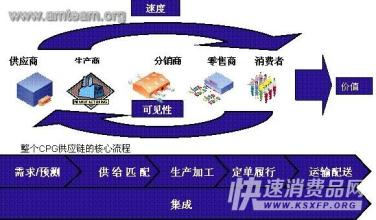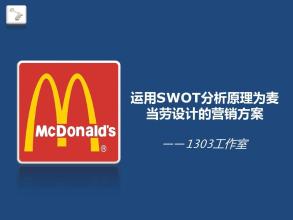The Best of Both Worlds首席营销官必须发挥总公司和业务单元的能力来彻底改造营销功能。CMOs need to leverage corporate and business-unit capabilities to reinvent the marketing functionBy Mike Leiseraihuau.com2000年营销领导力委员会进行的一项调查中,高达95% 的被调查者预计营销功能会集中化。5年之后,集中化的进展参差不齐,有的公司实现了引人注目的转变,而更多的公司仍然还挣扎在起跑线上。营销集中化的吸引力在于两个关键需求∶实现组织内部更高的一致性;充分发挥营销的主动性和品牌的力量。实现这两个目标越来越迫在眉睫。巨额并购案导致巨型公司的出现,造成公司内角色、职责、流程和系统的重叠和混淆。品牌组合日益庞大、复杂,管理的难度不断提高。客户对品牌及其背后的业务的期望也越来越高。那么究竟是什么阻碍了营销功能集中化的步伐呢?许多公司根本没有评估如何通过强大的业务单元营销力量加强公司实力来实现价值,而是直接匆匆踏上了集中化营销的道路。集中化的关键是必须根据公司业务总需求来权衡公司的营销结构,把资源部署到最需要的地方,以期实现品牌和业务目标。这一举措的最终目的是什么?就是创造能够服务于整个业务和所有品牌的结构。这个过程自上而下开始。公司高管层必须向各方明示公司整体业务目的及其实施战略。做到了这一点,一个集中的、放眼全公司的营销团队就能够鉴别出哪些战略能在各个品牌和市场中发挥最佳效果,进而执行战略并评估进展情况。业务单元的作用同样重要,他们必须制定各自的战略和增长计划,并将其纳入到更广泛的公司议程中去。他们还必须找出各自单元或各个品牌成长的驱动因素,确定各自单元成功的标准,制定取得成功的最佳营销战术。总公司营销应该超脱于纷争之外,发挥咨询指导作用。总公司营销的一部分战略价值体现在有能力客观地在全公司创造机会,而这些机会往往是个体业务单元所看不到的。总公司营销具备相当的资源支持公司各部门的集体合作。正如可口可乐公司一位前营销官所说∶“我们会从跨部门或全球的角度来深度考察客户的需求,这很有意义,而各个业务单元不用操心这件事。但是,我们真正的价值体现在我们有能力协调各个业务单元,把对客户的深入洞察应用到他们各自的业务当中去,并带来实质性的变化。”

这是个极大挑战。对营销集中化具有影响力的人必须清楚,有形增长是一个多方面的过程,公司文化也必须有相应改变。不同的公司在重新创立营销结构时采取了不同的方法。通用电气是获得成功的公司。通用电气要证明,只有公司和各个业务单元的营销人开展合作,才能够使双方的最佳想法发挥效力。通用电气并没有强制性地在11个分散的业务单元中推行公司新的品牌总战略(围绕“发挥工作中的想像”这一主题展开),而是由总公司和两家业务单元合作试行这个新战略,然后制定了战略实施指南,以保证这个战略对全公司都有意义。这种合作取得了丰厚的回报∶外界对通用电气公司的看法有了很大提升,公司的创新形象人气提升了35%,业内活跃程度提升了50%。企业不仅认识到品牌和营销对组织转型的巨大影响力,还认识到要发掘这种力量,必须建立恰当的组织结构(并由有能力的合适人员支持)。也就是说,公司要通力合作,协调、整合两股力量—总部和各业务单元的最佳营销团队—建立能够最好地支持业务模式和战略的组织结构。 (王欣红 译)In 2000, an overwhelming 95 percent of respondents to a Marketing Leadership Council survey said they anticipated centralizing aspects of their marketing functions. Five years later, progress against this objective is spotty. While some businesses have achieved noteworthy transformations, many are still struggling to take the first steps.The appeal of a centralized approach to marketing has its basis in two critical needs: to gain greater consistency across the organization, and to better leverage marketing‘s initiatives and the power of the brand. And the pressure to achieve both is only intensifying.Megamergers mean megaorganizations, creating overlap and confusion in roles, responsibilities, processes and systems. Brand portfolios are growing larger, more complex and more difficult to manage. Customers are increasingly demanding in their expectations of the brand and the business behind it.So what’s holding back true progress? Many companies jumped too fast into centralized marketing without evaluating how its power could be coupled with a strong business unit marketing force to deliver value.At issue is the need to weigh an enterprise marketing structure against the total needs of the business and identify where best to deploy resources to deliver on brand and business objectives. The end goal? Creation of a structure that serves the overall business as well as its brands.The process begins at the top. Senior management needs to articulate to all parties the company’s overall business goals and the strategies to achieve them. With that in hand, a centralized, corporate marketing team, with its companywide perspective, can take on the challenge of identifying which strategies are best implemented across brands or markets and how to get there and evaluate progress.The business units also have a critical role to play. They must develop a strategy and growth agenda for their inpidual businesses while integrating with a broader corporate agenda. They must also identify unit-or brand-specific growth drivers, determine what success looks like for the unit and find the best marketing tactics to achieve it.Corporate marketing must take on a consultative role that keeps it above the fray. Part of the strategic value corporate marketing brings to the organization is its objectivity and ability to generate opportunities across the company that are usually blocked from the inpidual business units’ view. Marketing also has considerable resources to help fuel collaborative efforts.As a former corporate marketer with Coca-Cola recalled: °∞When we came through with customer insights on a cross-unit or global basis, it was great-it was one less thing the business units had to worry about. But where we really proved ourselves was in the ability to collaborate with them to apply these insights to their specific business and make a material difference.°±The challenge is getting to this point. Those who are effecting this shift must understand tangible growth is a multifaceted process that requires culture change. Different companies have taken different paths toward reinventing their marketing organizations. One that has achieved success is General Electric.GE needed to demonstrate how collaboration between corporate and business unit marketers could result in the best thinking of both being put into play. Rather than force-feeding GE’s 11 disparate business units with the new corporate brand strategy (positioned around °∞Imagination at Work°±), corporate and two of the units partnered in test-driving the initiative, working out the kinks and ensuring that the effort would be meaningful across the organization. This collaboration paid off in substantial improvements in external perceptions of GE as an innovator (up 35 percent) and as a dynamic industry presence (up 50 percent).As businesses recognize the power of brand and marketing to transform an organization, they also realize the ability to tap into that power requires the right structure (supported by the right people with the right capabilities) to be in place. To do that takes a collaborative effort to leverage and integrate the best of both marketing worlds-at center and at the business units-with a structure that best supports the business model and strategy.
 爱华网
爱华网



